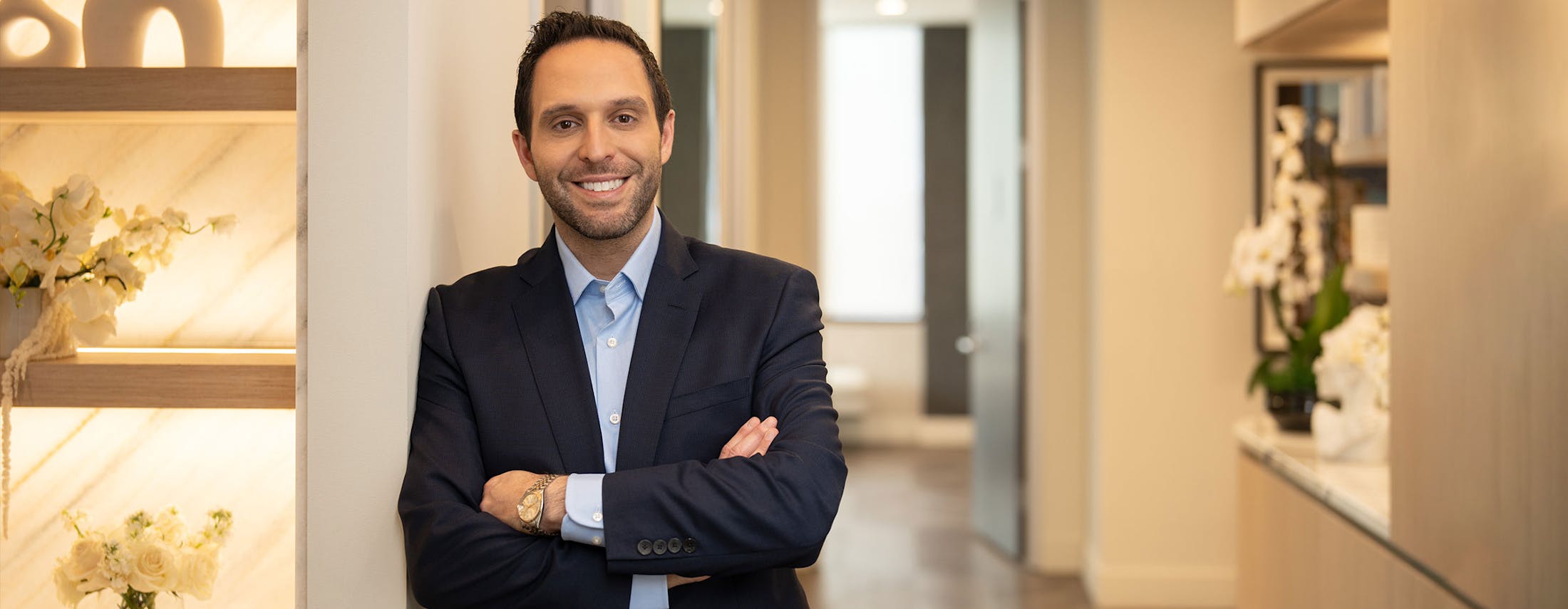Undergoing breast cancer surgery changes more than your body. It impacts how you feel about yourself. With Dr. Brian Shafa, a breast reconstruction in Beverly Hills isn’t just a procedure; it’s a vital step in your healing journey. Using advanced surgical techniques, state-of-the-art technology, and a deeply personalized approach, Dr. Shafa helps restore breast shape, symmetry, and volume so you can feel whole again.
What is Breast Reconstruction?
Breast reconstruction is a surgical procedure designed to rebuild one or both breasts following a mastectomy or lumpectomy. The goal is to restore natural-looking shape, symmetry, and volume using one or more advanced techniques.

Why Consider Breast Reconstruction?
Breast reconstruction restores the appearance of one or both breasts following mastectomy or lumpectomy. This procedure can:
- Recreate natural breast shape, projection, and balance
- Improve symmetry for a more proportionate silhouette
- Help clothing fit more comfortably and confidently
- Support emotional closure after cancer treatment
- Enhance overall quality of life and body confidence


Are You a Candidate for Breast Reconstruction?
You may be a strong candidate for breast reconstruction if you:
- Have undergone or are planning a mastectomy or lumpectomy
- Are in overall good health
- Are a non-smoker or willing to stop smoking during the healing process
- Have realistic expectations about the procedure and outcome
- Require revision surgery or symmetry correction
Health insurance providers are federally mandated to cover breast reconstruction after mastectomy. Dr. Shafa’s team can guide you through the approval process for breast reconstruction in Beverly Hills.

What Types of Breast Reconstruction Procedures Does Dr. Shafa Offer?
Immediate Reconstruction
Performed during your mastectomy, avoiding multiple surgeries and recovery periods.
Delayed Reconstruction
Scheduled after chemotherapy, radiation, or other treatments are completed.
Implant-Based Reconstruction
- Direct-to-Implant: Immediate placement during mastectomy without tissue expansion
- Two-Stage Reconstruction: Uses a tissue expander before final implant placement
Autologous (Natural Tissue) Reconstruction
Uses your own tissue for a more natural look and feel:
- DIEP Flap – from the abdomen, preserves abdominal muscles
- PAP Flap – from the thighs for patients without sufficient abdominal tissue
Hybrid Reconstruction
Combines implants with fat grafting or flap tissue for a softer, more natural contour.
Fat Transfer Refinement
Uses liposuctioned fat to fine-tune volume, symmetry, or shape—often for revision cases.

Breast Reconstruction Surgery: What to Expect – Step by Step
1. Consultation
Your consultation is a private, supportive space where Dr. Shafa learns about your medical history, treatment journey, and personal goals. Together, you’ll review the options that best fit your anatomy, cancer treatment history, and lifestyle preferences.
2. Personalized Surgical Plan
Every procedure is tailored to your needs, whether that’s implant-based, natural tissue, or a hybrid approach.
3. Surgery & Recovery
- Surgery Time: Typically 2–6 hours, depending on technique
- Initial Recovery: 4–6 weeks
- Return to Normal Activities: Usually within 6–8 weeks
- Ongoing follow-up care to ensure optimal healing and results

Insurance & Financing with Dr. Brian Shafa
Most breast reconstruction after mastectomy is covered by insurance under federal law. Dr. Shafa’s team assists with:
- Insurance pre-authorization and documentation
- Understanding coverage and out-of-pocket costs
- Flexible financing options through CareCredit®
What is the Recovery From Breast Reconstruction Surgery?
Recovery times vary based on the technique used, but most patients should plan for:
- Initial Recovery: 4–6 weeks of healing
- Limited Range of Motion: Especially in the first 2–3 weeks post-op
- Follow-Up Appointments: Scheduled regularly to monitor healing
- Return to Normal Activities: Typically within 6–8 weeks
Dr. Shafa will provide detailed aftercare instructions after your breast reconstruction in Beverly Hills and will be with you every step of the way.

Why Should I Choose Dr. Brian Shafa for My Breast Reconstruction?
- Board-Certified Plastic Surgeon with extensive breast reconstruction experience
- Fellowship-trained in both implant-based and autologous techniques
- Active staff privileges at leading Beverly Hills hospitals
- Collaborative approach with your oncology team to ensure safe timing and optimal results
- Reputation for natural, beautiful outcomes backed by patient testimonials and 5-star reviews

Schedule a Consultation Today
Take the next step in your recovery with confidence. Schedule your private breast reconstruction consultation with Dr. Brian Shafa in Beverly Hills.
📞 Call: (310) 364-5262
📍 Location: 9454 Wilshire Blvd, Suite 710, Beverly Hills, CA 90212
Breast Reconstruction FAQs
What is the difference between DIEP flap and TRAM flap breast reconstruction?
Both DIEP and TRAM flaps use tissue from the lower abdomen to reconstruct the breast. However, DIEP flap surgery preserves the abdominal muscles, using only skin and fat along with tiny blood vessels, while TRAM flap surgery involves removing some or all of the rectus abdominis muscle. DIEP flap offers a quicker recovery and less risk of long-term abdominal weakness, making it a preferred option for eligible patients.
Can I have breast reconstruction if I’ve had radiation therapy?
Yes, but radiation can affect the timing and type of reconstruction. Patients who’ve had radiation may be better suited for autologous (flap-based) reconstruction, which uses natural tissue instead of implants. This technique can better tolerate the effects of radiation and often yields more natural-feeling results. Dr. Shafa will assess your treatment history and customize a safe, effective plan.
What are the options for nipple reconstruction?
If the nipple was removed during mastectomy, reconstruction can be performed through: surgical techniques (creating a nipple from skin tissue), 3D nipple-areola tattooing for a realistic appearance, or a combination of both. In some cases, nipple-sparing mastectomy is possible, allowing the original nipple to be preserved during reconstruction.
How long after a mastectomy should I wait to have breast reconstruction?
This depends on your treatment plan. Immediate reconstruction is performed during the same surgery as the mastectomy, while delayed reconstruction can occur months or even years later, typically after chemotherapy or radiation. Dr. Shafa will help determine the safest and most aesthetically effective timeline based on your cancer treatment and healing process.
Is it possible to revise or improve a previous breast reconstruction?
Absolutely. If you're dissatisfied with the results of a past reconstruction—due to asymmetry, implant issues, scar tissue, or volume loss—Dr. Shafa can perform revision breast reconstruction. This may involve switching implant types, fat grafting, or transitioning to a flap-based technique for a more natural look and feel.
References
- Theodore W. Uroskie Jr, Lawrence B. Colen "History of Breast Reconstruction" - Seminars in Plastic Surgery
- Peter G. Cordeiro, M.D. "Breast Reconstruction after Surgery for Breast Cancer" - The New England Journal of Medicine
- Kroll, Stephen S. M.D; Baldwin, Bonnie M.D. "A Comparison of Outcomes Using Three Different Methods of Breast Reconstruction" - Plastic and Reconstructive Surgery









